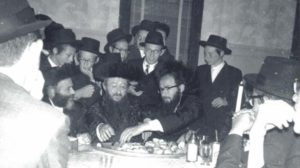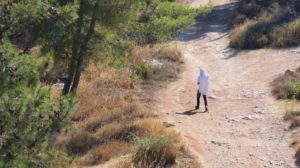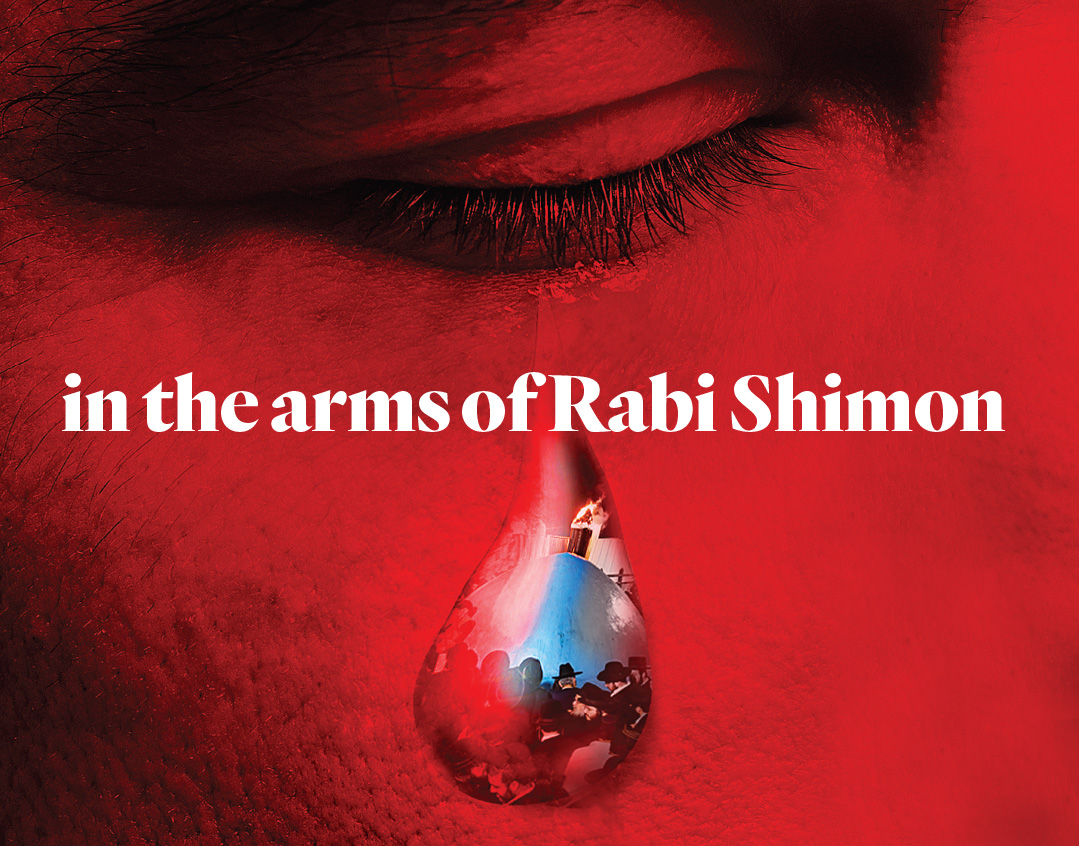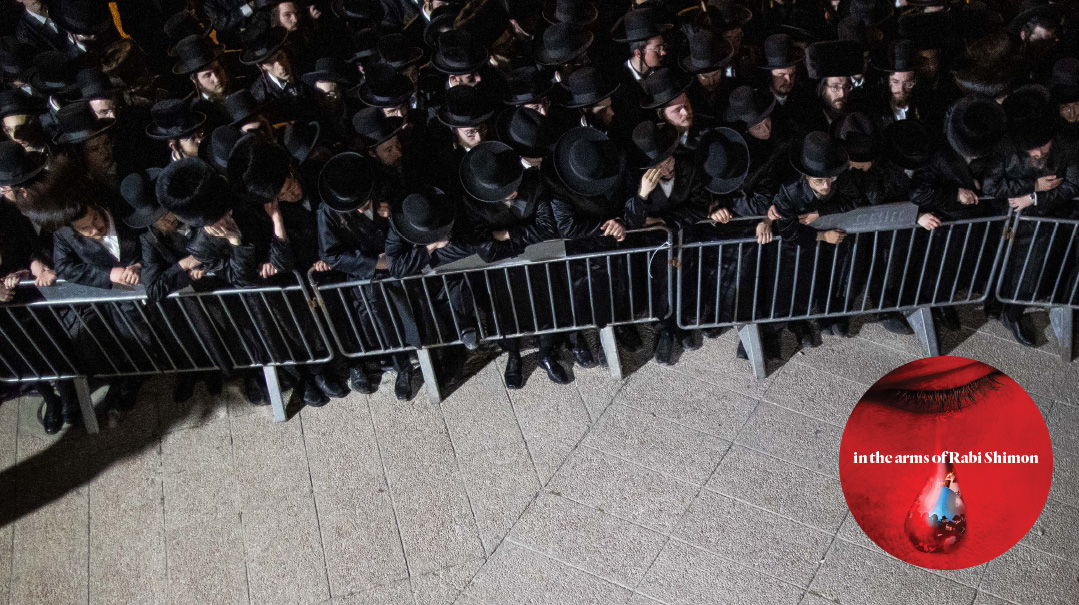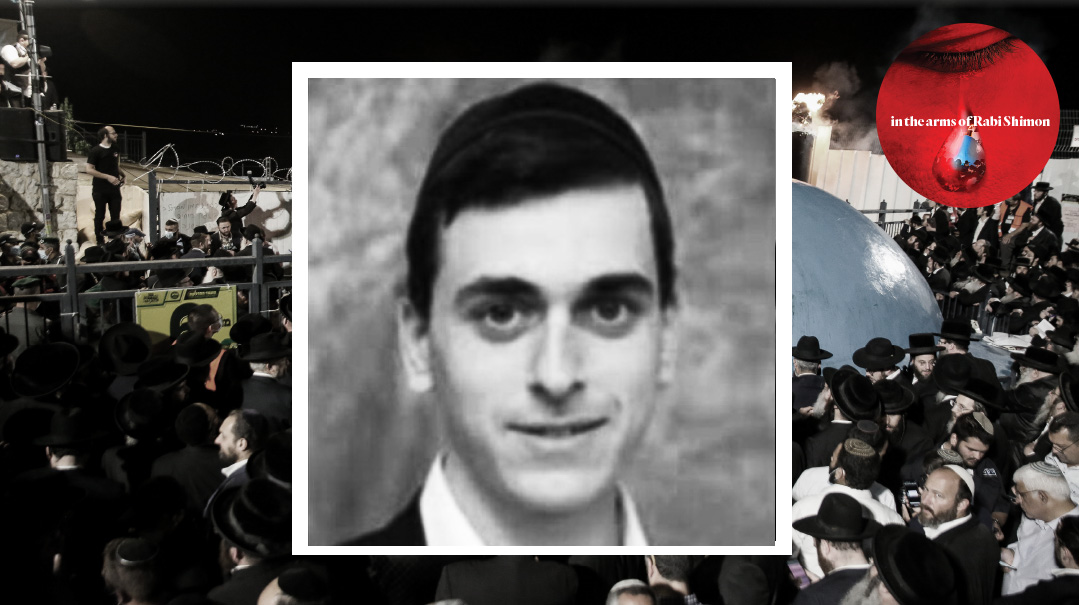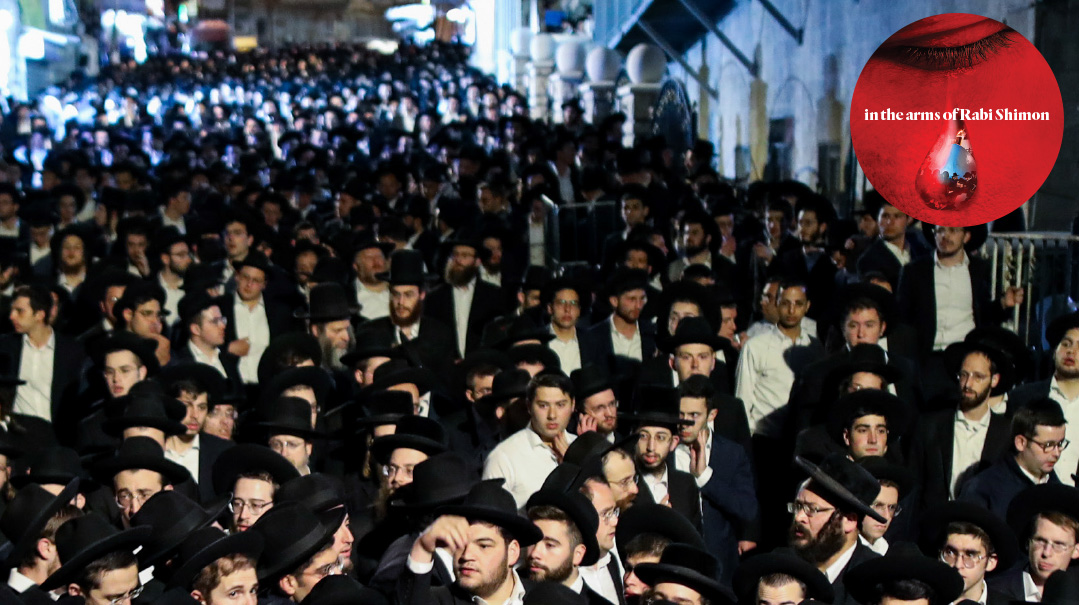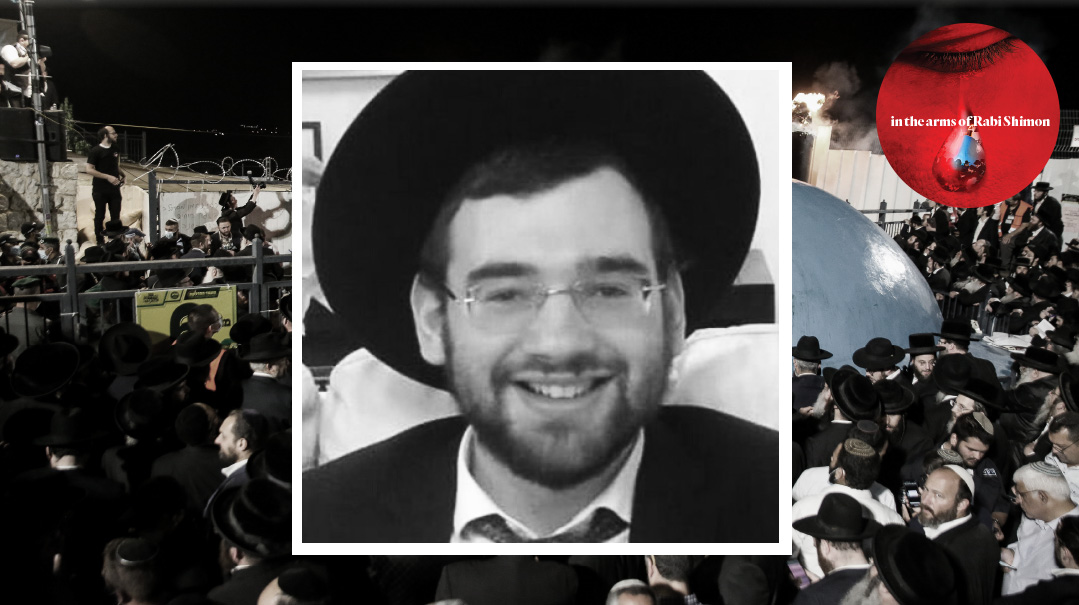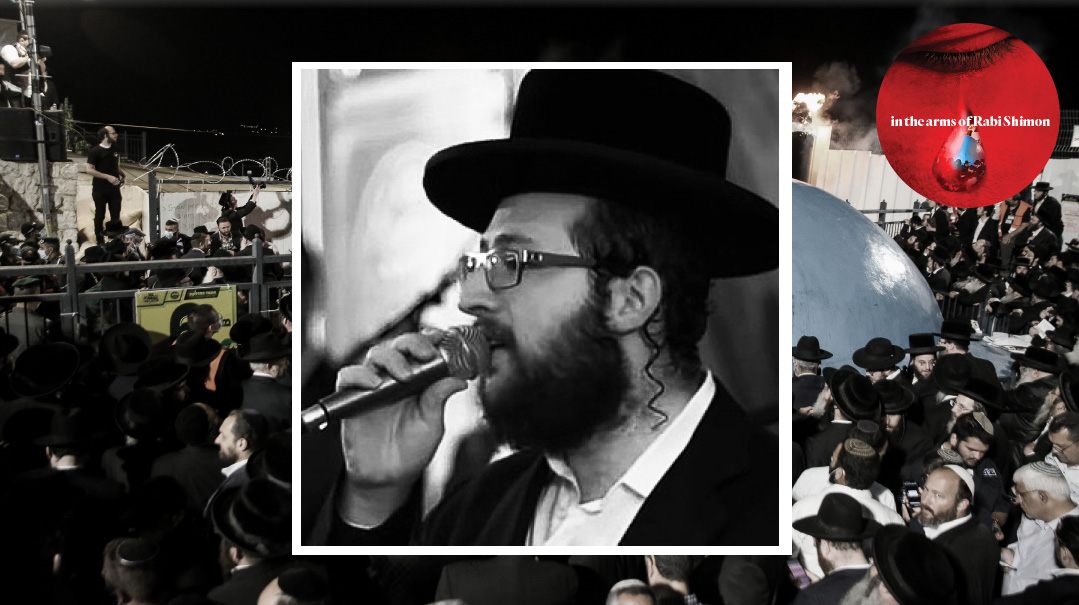A Place of Tears
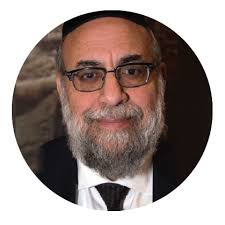
Forty years ago I learned the secret of the tears at Kever Rashbi. Now, as we cry together, I feel compelled to share it
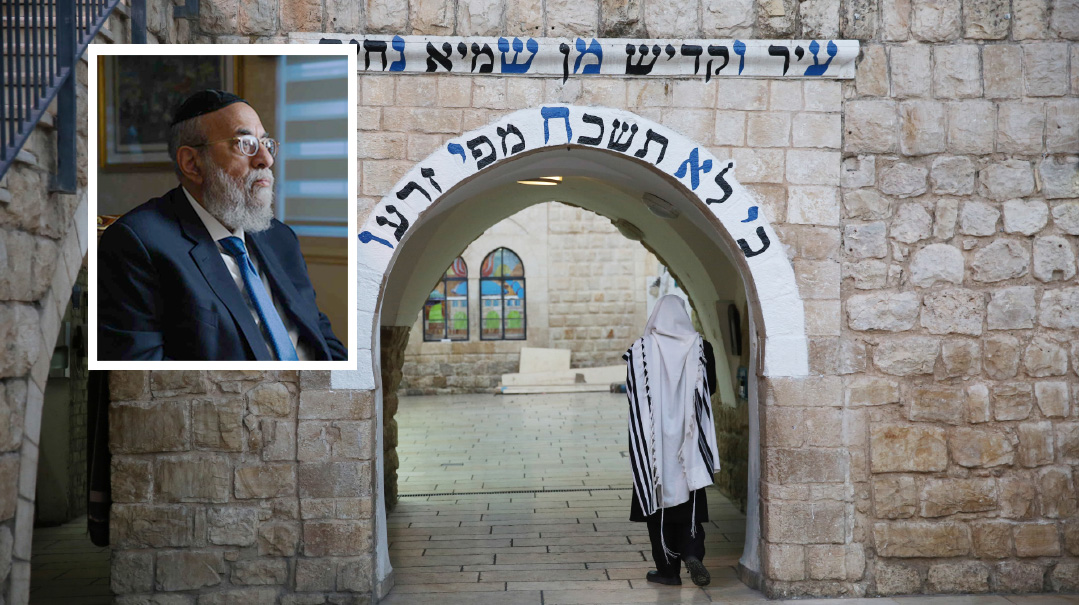
Kever Rashbi is and has always been a place of tears. Tears of anticipation of parents bringing their three-year-old sons for an upsheren, tears of joy celebrating the light of Torah brought down to this temporal world by the storied Tanna. Now, it’s the site of oceans of tears, of loss, of pain, of absolute shock — all mingled together in that hallowed place where centuries of tears have been shed.
While all this is well known to all of us, there is something about this “place of tears” that is not as well known, which I feel compelled to share. First, a little background is in order.
More than 40 years ago I had the opportunity to lead a group of teenagers on an NCSY summer tour of Eretz Yisrael. One of our stops was Kever Rashbi in Meron. When we arrived there, I looked around at the “regulars” who were sitting right by the kever, and I had an idea: Why not approach one of the people who spend days, months, and years by the kever and ask him to share his personal story?
I approached one elderly man davening by the kever with great intensity. While he was quite disturbed at the interruption of his daily quota of Zohar — an inheritance from his father and grandfather — he agreed to speak to our group.
On that summer afternoon, he shared the most fascinating story about the power and holiness of the site.
About 70 years earlier, two young avreichim, each married for several years without being blessed with children — despite praying at many gravesites of tzaddikim — visited a famed Sephardic mekubal who was known for his ability to give effective brachos. To their dismay, he said he could not help them. They begged and pleaded, to the same refrain — until finally he said, “There is one possible idea I have that may help you, but you cannot reveal it to anyone.”
He then told them about an elderly Yid in tattered clothes who is found every night at Kever Rashbi in Meron. “Go to him,” he said. “He is one of the lamed-vav tzaddikim of our generation, and he will know how to help you. He will at first act like he doesn’t even hear you, but tell him that I sent you to him.”
These two avreichim left on the next bus to Meron and waited until it was dark. Soon they located the mysterious man, and explained why they had come. He instructed them to each finish the entire Sefer Tehillim, to immerse in a mikveh, and then to come back to him. He then instructed them to both stand in a particular spot next to the kever and wait until he signaled them to daven very intensely and ask Rashbi to intercede on their behalf. When tears hit the ground, he promised, their yeshuah would come. Both men cried out in tefillah; one shed actual tears, while the other did not. After a while, he signaled for them to stop and to return home.
Less than a year later, one of the two avreichim had a child, while the other did not. He traveled back to Meron to seek out the hidden tzaddik once again to ask him why he was still waiting, unlike his friend — especially in light of the fact that he had shed actual tears and his friend had not.
The tzaddik’s response unveiled the incredible secret of this special and holy place.
“When I said that your yeshuah would come when a tear falls to the ground,” he said, “I didn’t mean your tear. I meant the holy tear of the Rashbi himself. When someone davens from the depths of his heart a true and complete tefillah, the holy Rashbi is moved to tears. And when his tears hit the ground, I can hear it — and I know then that the yeshuah for that person will surely come. When you davened, something was missing, and I did not hear a tear drop. So I knew that your yeshuah would not yet come.”
I heard this story more than 40 years ago, but I remember every detail still. This is the secret of Meron’s hallowed, sacred place. When the Rashbi sheds his holy tears, yeshuos come.
Last Lag B’Omer, I had just returned home from the hospital after a near-fatal bout of COVID-19, and I was learning that I returned to a different world than the one I had known before. One of my first visitors was a dear friend who hasn’t missed a Lag B’Omer in Meron in more than 30 years. We sat together, and he showed me pictures of an almost-deserted Meron. I remember thinking about the secret of the kever and wondering how many of Rashbi’s tears hit the ground in response to the pain of his empty gravesite on what had been accepted for centuries as Rashbi’s day.
Then came Lag B’Omer 5781, with an incomprehensible, catastrophic, and colossal tragedy, one that filled that hallowed space with the tears of Klal Yisrael — those who were there and those who were not. And then I thought of Rashbi’s tears. How many tears did Rabi Shimon himself shed, witnessing this “sereifah asher saraf Hashem” in our midst? How many tears does Rabi Shimon have to shed until “chamas haMelech shachachah,” the wrath of our King is appeased?
I wonder: If that hidden tzaddik of yesteryear were to be standing in his “special spot” at that moment, would he have heard the buckets of tears from the Rashbi falling to the ground? Maybe he would even have heard the tears of Mashiach, pleading with the Av Harachamim to allow him to finally appear.
But until he does appear, we are left with questions. How can we process such a colossal tragedy?
We must first accept that Hashem’s ways of judgment are beyond human comprehension. In Tehillim (36:7), David Hamelech explains to us that the righteousness of Hashem is like a mountain, but His mishpat (judgment) is like the depths of the sea.
The Midrash explains that just as one can see the top of a mountain from afar, so too can one catch a small glimpse of Hashem’s righteousness from a distance. However, just as one cannot see the depths of the sea, so too one cannot see or comprehend the judgment of Hashem.
There is a well-known story about the Ramban, whose young son was deathly ill. When he realized that the boy’s time had come, the Ramban gave him two pieces of paper that contained various holy names. He instructed him to show the first note to the angel in charge of each of the first six gates in Heaven. When he arrived at the seventh gate, he should present the second note. It was inscribed with the question, “Why did this happen to me?”
Shortly after his passing, the boy appeared to his father in a dream. “I did as you requested at all the gates,” he said, “but when I came to the seventh gate, there were no questions.”
At this point, the 45 holy martyrs — who died just moments after declaring kabbalah ol malchus Shamayim in unison in such a sacred place — have no questions. It is only we, left in this olam hasheker, who struggle with questions.
Still, we understand that this calamity was a fire sent down from on High. One of the gedolim of the previous generation explained to the family of a young wife and mother who was struck and killed by a hit-and-run driver while doing a mitzvah one Friday night that this tragedy did not happen because the driver could not see, or because the brakes on the car failed. It was because a fire came down from the Heavens aimed at bringing her pure neshamah to Shamayim.
The same thing happened on Thursday night. It wasn’t a collapsed walkway, or a blocked exit: it was a fire that consumed 45 kedoshei elyon in one painful and incomprehensible moment.
Throughout Shas, we find that whenever the Gemara ends with unresolved questions, the discussion is concluded with the word “Teiku” — an acronym for “Tishbi [Eliyahu Hanavi] yitareitz kushiyos,” Eliyahu will come and answer our remaining questions.
Why then, asked Rav Avraham Schorr, doesn’t it suffice with “Eliyahu”? What does the word “Tishbi” add? And he explained that Tishbi itself is an acronym for “Tiratz Shimon bar Yochai ” — because Rashbi will come, and his deep and penetrating understanding of Torah will answer our questions.
He will yet come to answer this question as well.
We find two diametrically opposed responses to tragedies in the Torah. Aharon reacted to the death of his two sons with silence — “Vayidom Aharon”; David Hamelech reacted to tragedy with song — “l’maan yizamercha kavod v’lo yidom.”
Which is the correct response, silence or song? I believe that both are correct. Aharon responded to a personal tragedy and therefore he was silent. David, however, was the king of a nation and his response was the correct response to a national tragedy. What happened on Lag B’omer in Meron was a national tragedy and we dare not be silent. We must sing and continue to sing the praises of Hashem and His infinite chesed and rachamim.
The Ostrov-Kalushiner Rebbe in Cedarhurst, Rav Dovid Spiegel, who is very dear to me, once shared an incredible story depicting the gevurah of his great father ztz”l. Many years ago, Rav Spiegel’s twin brother was killed in a terrible car accident. When the elderly Rav Spiegel was sitting shivah for his son, his dear friend the Sulitzer Rebbe came to be menachem avel.
“All there is to say now,” he told his dear friend sitting shivah for a child, “is ‘Vayidom Aharon.’ ”
“No,” Rav Spiegel responded with quiet urgency. “I will not be silent. David Hamelech already said, ‘L’maan yizamercha… v’lo yidom.’ So, too, I will not be silent. I will continue to sing Hashem’s praises.”
Our communal response — as individuals and as part of Klal Yisrael — must be genuine and unforced. Unfortunately, we often get distracted and lose focus on what’s important. One person who is part of a large WhatsApp group comprising many educated and community-minded individuals called me in response to a Yamim Noraim article I had written in these very pages.
He said that he went back and counted how many Covid-related comments on the chat group were sent during Elul discussing — yes, masks, or no masks — whether to follow the rules or not to follow the rules. The total was over 1,500 in the span of just 40 days.
The Eibeshter sent a mageifah that turned the entire world upside down and instead of so many Yidden internalizing His message to us, so much time was absolutely wasted on utter narishkeit. Here, too, after this Lag B’omer tragedy, we risk becoming wrapped up in investigations and ensuing politics instead of internalizing once again a potch from Hashem, this time directed at our kehillos.
The same dynamic is at work after seeing salvation, not just painful judgment calls. We often forget to attribute salvation — even miraculous salvation — to Hashem.
There was a young girl in Radin who began to experience convulsions, and then a strange male voice began to emit from deep within her. The doctors could not help her, so her father ran to the saintly Chofetz Chaim. The Chofetz Chaim sent his prime disciple, Rav Elchonon Wasserman, along with some others, giving them clear instructions how to remove the dybbuk that had possessed the girl.
One member of the group was a young Rav Chatzkel Levenstein, later to become the famed Mirrer Mashgiach. Rav Elchonon began to talk to the dybbuk as per the Chofetz Chaim’s directive, and then ordered him to leave the girl immediately. Soon after, they heard a loud and strange scream emanate from her and then she returned to normal functioning.
The young Rav Chatzkel was so overwhelmed by what he witnessed that the entire Thursday night he could not sleep. The next morning he went to the market in Radin to purchase items for Shabbos, and the entire town was electrified by the story. Yet when Rav Chatzkel repeated this incredible story to his talmidim in later years, he would say to them, “And after all this, the tailor remained the same tailor, the shoemaker remained the same shoemaker.”
We need to take a hard look at ourselves. Are we like that tailor or shoemaker?
Most have put the past painful year of Covid behind us. Kiddushim are back with all their glory and so are our overblown simchahs. Has anything changed in our lives?
In 1939, three of the gedolei hador passed away in rapid succession. First was Rav Shimon Shkop, followed just 26 days later by Rav Boruch Ber Leibowitz. And several months later, Rav Chaim Ozer Grodzenski passed away. At that time, the words of Zechariah (11:8), “I will cut off the three shepherds,” took on an eerie prescience. This threefold loss meant that bad tidings would soon follow.
In fact, just days later, the Nazi plan to exterminate the world’s Jews was put into place.
Yet just months ago when we lost three of our gedolei hador — Rav Dovid Feinstein, then Rav Dovid Soloveitchik, followed on the same day by Rav Yitzchok Scheiner — did we pay attention? Could what happened on Lag B’omer be the bad tidings that our leaders warned us about?
But there is another way to view these dark events.
Rav Tzaddok HaKohein describes the parallel between the natural world and Hashem’s relationship with Klal Yisrael. The darker the clouds, the more rain will come. In fact, without the dark clouds filling the sky, rain will never come. So too with Klal Yisrael: after the dark days that we endure, there is a promise of much rain.
This year, Lag B’omer, which is meant to be a day of “light,” became a very, very dark day. According to Rav Tzaddok, we can expect an abundance of light.
But there is something that has to come first. We need to bring some type of nechamah to the hundreds and hundreds of aveilim who are enduring such indescribable pain. We can do that by being mekadeish sheim Shamayim.
While most Rishonim translate “Vayidom Aharon” as “Aharon was silent,” the Seforno translates it as “Aharon was comforted.” He was comforted by the fact that a kiddush Hashem resulted from the death of his two sons.
How are we to understand that it was a kiddush Hashem when Chazal offer several suggestions as to what they did wrong? My son-in-law Rav Yudi Jeger shared an insight from a lifelong chaver of mine, Rav Avrohom Stulberger. Rashi explains that Klal Yisrael saw what happened to two great people who were doing the avodah in the Mishkan and yet they died. In response, they realized how much is expected of us, and they therefore did teshuvah.
This explains the Seforno’s language: When Aharon saw his sons’ deaths brought Klal Yisrael to teshuvah, thereby earning the distinction of al kiddush Hashem, he was able to find comfort.
Forty-five holy souls have left us. If we each commit to one small improvement as a result of this tragedy, then their deaths will qualify as al kiddush Hashem, which is the greatest level that a person can reach in this world. If this gave Aharon HaKohein some nechamah, then surely it can do the same for the families now experiencing such unbearable pain.
Despite our pain and despite our losses, we will continue to sing and we will continue to dance with Rashbi. And we will ask him to gather up all the tears that he has shed for the centuries of tzaros that Yidden have shared with him, mixed with the tears of these 45 holy neshamos, and go to the Kisei Hakavod and present them to HaKadosh Baruch Hu on our behalf.
Rabi Shimon, you promised that you alone can bring atonement to all of Klal Yisrael, and we ask you — no, we beg you — to please do so now.
Rabi Shimon bar Yochai, we never needed you more than we do now. We will not be silent. We choose to be like David Hamelech, “l’maan yizamercha v’lo yidom” — we choose to sing along with you the songs that will usher in the ultimate shir of the coming of Mashiach.
May it happen speedily in our days.
This article was written lz”n Sara Chaya z”l bas Rav Chaim Aryeh Zev
(Originally featured in Mishpacha, Issue 859)
Oops! We could not locate your form.


